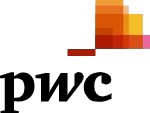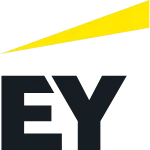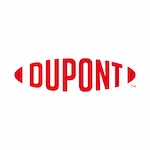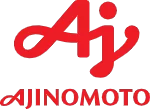MOSFET Dosimeter Market Size, Production, Sales, Average Product Price, Market Share, Import vs Export

- Published 2025
- No of Pages: 120+
- 20% Customization available
Rising Demand Across Healthcare and Radiation Therapy Boosts MOSFET Dosimeter Market
The MOSFET Dosimeter Market is witnessing significant expansion, driven largely by the rising global incidence of cancer and the consequent growth in radiation-based treatments. For instance, as per Datavagyanik, global cancer cases are expected to exceed 29 million annually by 2040, substantially increasing the reliance on precise radiation dosimetry tools. This surge in oncology cases is directly impacting the demand for real-time, high-sensitivity dosimeters, positioning the MOSFET Dosimeter Market for robust growth over the next decade.
MOSFET dosimeters are particularly suited for intensity-modulated radiation therapy (IMRT) and image-guided radiation therapy (IGRT), techniques which require precise dose measurement and patient-specific calibration. Their miniaturized design and instant readout capability make them highly attractive to oncologists and radiologists who require immediate verification of radiation dose delivery. The growing preference for targeted and adaptive radiation therapy is further elevating the relevance of these devices, making the MOSFET Dosimeter Market an increasingly vital segment in the broader radiation detection ecosystem.
Technological Advancements Powering MOSFET Dosimeter Market Innovation
The MOSFET Dosimeter Market is also benefiting from significant strides in sensor technology and semiconductor engineering. Continuous innovation in metal-oxide-semiconductor fabrication has led to the development of more durable, responsive, and thermally stable dosimeters. For example, new-generation devices offer sensitivity enhancements of over 35%, expanding their application in complex environments such as proton therapy and stereotactic radiosurgery.
In addition, miniaturization has allowed for easier integration of MOSFET dosimeters into phantom models and robotic arms used in radiotherapy simulation and planning. Datavagyanik highlights how advancements in fabrication have cut sensor drift by up to 40%, reducing recalibration needs and improving clinical workflow. These technological benefits not only contribute to operational efficiency but also reinforce user trust in the accuracy of dosimetry—a critical consideration in patient care.
MOSFET Dosimeter Market Growth Supported by Expanding Diagnostic Imaging Sector
A parallel contributor to the MOSFET Dosimeter Market is the booming diagnostic imaging sector. As countries invest heavily in nuclear medicine and radiological diagnostics, the role of accurate dose measurement is becoming indispensable. For instance, in 2023 alone, the number of CT scans performed globally surpassed 300 million, many of which require dose verification for patient safety compliance.
This rising diagnostic intensity, particularly in markets like North America, Europe, and increasingly in Asia-Pacific, underscores the critical need for in-vivo and phantom-based dose validation. MOSFET dosimeters, given their superior spatial resolution and energy independence, are emerging as the tool of choice in such high-throughput settings. As imaging centers and diagnostic labs prioritize patient safety and regulatory compliance, the MOSFET Dosimeter Market continues to benefit from this diagnostic expansion.
Industrial and Academic Research Accelerating MOSFET Dosimeter Market Penetration
Beyond healthcare, the MOSFET Dosimeter Market is also gaining traction in industrial and academic research domains. Facilities engaged in high-energy physics, nuclear materials testing, and aerospace simulation often operate in radiation-intensive environments, necessitating robust dosimetry solutions. In such settings, the precision and durability of MOSFET dosimeters are valued for tasks such as calibrating radiation beams or validating exposure simulations.
Universities and national laboratories increasingly incorporate MOSFET-based systems in dosimetry courses and radiation experiments. Datavagyanik indicates that demand from educational and research institutions is expected to grow at a compound annual rate of 6.5% through 2030, as academic institutions scale up investments in medical physics and nuclear engineering disciplines. This academic and research-sector adoption is expected to further expand the footprint of the MOSFET Dosimeter Market in non-clinical environments.
Integration with AI and Digital Platforms Transforming MOSFET Dosimeter Market Dynamics
Another transformative trend reshaping the MOSFET Dosimeter Market is the integration of these devices with digital health platforms and artificial intelligence (AI). The emergence of cloud-based radiation monitoring systems has enabled real-time data logging, remote verification, and predictive analytics in radiation therapy and nuclear operations.
Modern MOSFET dosimeters are now equipped with digital interfaces and wireless connectivity, facilitating automated calibration and remote dose tracking. Such capabilities are particularly useful in multi-center hospital chains and military-grade research facilities, where centralized data access improves efficiency and oversight. Datavagyanik observes that the incorporation of AI for dose optimization algorithms is expected to drive MOSFET Dosimeter Market growth at an unprecedented rate, particularly in regions prioritizing digital health transformation.
Expanding Application in Pediatric and Geriatric Radiation Therapy Drives MOSFET Dosimeter Market
Radiation sensitivity is significantly higher in pediatric and geriatric populations, necessitating highly accurate and real-time dosimetry solutions. The MOSFET Dosimeter Market is increasingly catering to this specialized demographic, offering solutions tailored to low-dose precision and anatomical variability.
For example, pediatric radiotherapy centers are deploying MOSFET dosimeters to monitor intra-fraction dose delivery with sub-millimeter accuracy, thereby reducing collateral damage to developing tissues. Similarly, in geriatric oncology, where comorbidities necessitate ultra-conservative dose management, these dosimeters are proving critical in balancing efficacy with safety. The increased clinical awareness around demographic-specific dose sensitivity is directly boosting the adoption curve of the MOSFET Dosimeter Market.
Regulatory Emphasis on Radiation Safety Amplifying MOSFET Dosimeter Market Size
Globally, regulatory authorities have intensified scrutiny on radiation safety, contributing to the rising MOSFET Dosimeter Market size. With agencies such as the FDA, IAEA, and Euratom setting stricter compliance requirements for dose monitoring, healthcare providers are under pressure to adopt more precise and auditable dosimetry tools.
In particular, mandates around real-time dosimetry in high-risk procedures such as fluoroscopy, proton therapy, and nuclear cardiology have made MOSFET systems indispensable. Datavagyanik projects that compliance-driven demand alone will account for 18–22% of the overall MOSFET Dosimeter Market growth by 2030. The devices’ traceability and data integrity features make them ideally suited to fulfill such regulatory expectations.
Strategic Collaborations and Product Launches Accelerating MOSFET Dosimeter Market Expansion
Market participants are engaging in strategic partnerships and innovative product launches to solidify their position in the MOSFET Dosimeter Market. For instance, collaborations between dosimeter manufacturers and radiotherapy OEMs have led to the integration of MOSFET technology directly into treatment delivery systems. This has simplified workflows, reduced setup time, and improved user adoption across radiology departments.
Recent product innovations have included modular sensor arrays for high-resolution 3D dose mapping and multi-channel MOSFET systems for simultaneous multi-point monitoring. Datavagyanik highlights that such product differentiation is catalyzing both volume growth and market penetration, especially in Asia-Pacific and Latin America, where infrastructure modernization is opening new frontiers for the MOSFET Dosimeter Market.
MOSFET Dosimeter Market Size Reflects High Growth Potential in Emerging Economies
The MOSFET Dosimeter Market size is projected to experience double-digit growth in emerging economies, driven by healthcare infrastructure investments and the proliferation of cancer care centers. Countries such as India, Brazil, and South Africa are rapidly expanding access to radiation therapy, creating fertile ground for dosimetry technology deployment.
For instance, India’s National Cancer Grid aims to add over 100 new radiotherapy centers by 2028, each requiring comprehensive dosimetry equipment. MOSFET dosimeters are positioned as the preferred solution due to their cost-efficiency, versatility, and real-time capabilities. Datavagyanik expects emerging markets to contribute nearly 35% of the global MOSFET Dosimeter Market size by 2030, highlighting their pivotal role in shaping the market’s global trajectory.
“Track Country-wise MOSFET Dosimeter Production and Demand through our Database”
-
-
- MOSFET Dosimeter sales volume database for 30+ countries worldwide
-
Regional Growth Trends Define the Future of the MOSFET Dosimeter Market
The MOSFET Dosimeter Market is witnessing dynamic expansion across regions, driven by a combination of healthcare infrastructure development, regulatory modernization, and increasing clinical awareness around radiation safety. North America continues to lead the market, accounting for more than 35% of the global MOSFET dosimeter consumption. This dominance is attributed to widespread adoption of advanced radiotherapy techniques, robust reimbursement frameworks, and the early integration of digital dosimetry solutions across oncology centers.
For example, the United States alone conducts over 1.7 million radiation therapy procedures annually, many of which involve IMRT, IGRT, or stereotactic body radiation therapy (SBRT), all of which demand real-time, high-accuracy dose measurement. The result is a sustained demand trajectory for MOSFET dosimeters across hospital networks, academic research labs, and private diagnostic imaging facilities.
Asia-Pacific Emerges as Fastest-Growing MOSFET Dosimeter Market
The Asia-Pacific region is projected to be the fastest-growing contributor to the global MOSFET Dosimeter Market, with Datavagyanik estimating a compound annual growth rate of over 11% through 2030. This growth is driven by rapid urbanization, increased government healthcare spending, and a marked rise in cancer incidence. Countries such as China, India, and South Korea are investing heavily in radiation therapy equipment, thereby creating parallel demand for high-precision dosimetry tools.
For instance, China’s expansion of tertiary hospitals in Tier 2 and Tier 3 cities has fueled the procurement of radiotherapy machines, each of which requires a full set of dosimetry calibration tools. MOSFET dosimeters, with their real-time feedback and ease of calibration, are increasingly being selected over traditional TLDs or diodes. Moreover, training programs for medical physicists in Asia are incorporating MOSFET-based dosimetry as standard practice, embedding long-term demand into the clinical education ecosystem.
Europe Drives Innovation and Standardization in MOSFET Dosimeter Market
Europe represents a critical hub for innovation and regulatory alignment within the MOSFET Dosimeter Market. Countries like Germany, France, and the UK are at the forefront of standardizing radiation safety protocols in oncology and nuclear medicine. For example, over 60% of radiotherapy centers in Western Europe now employ real-time dosimetry for adaptive treatment planning, creating steady demand for MOSFET dosimeters that can offer immediate feedback and high reproducibility.
Datavagyanik identifies Europe as a center of excellence for clinical trials involving novel radiation techniques such as FLASH therapy and carbon ion therapy—both of which require next-generation dosimetry equipment. In these highly experimental modalities, MOSFET dosimeters provide critical verification of complex dose delivery patterns, particularly due to their small form factor and response speed. As a result, European demand is strongly correlated with clinical innovation, reinforcing the region’s strategic importance in the global MOSFET Dosimeter Market.
MOSFET Dosimeter Manufacturing Centers Consolidated in North America and Asia
MOSFET Dosimeter Manufacturing is primarily concentrated in technologically advanced regions, with North America and East Asia being the principal hubs. Leading manufacturers have established vertically integrated operations involving semiconductor fabrication, sensor assembly, and device testing. For instance, MOSFET dosimeter sensors are often fabricated in Class 100 cleanrooms and undergo rigorous burn-in procedures to ensure thermal and electrical stability.
In countries like Japan and South Korea, semiconductor manufacturing excellence has translated into highly efficient MOSFET Dosimeter Manufacturing processes, enabling higher throughput and better cost control. These regions benefit from access to high-purity silicon substrates, skilled labor, and tightly regulated quality assurance protocols. Datavagyanik notes that innovations in wafer doping and oxide layering have led to nearly 20% performance gains in new-generation MOSFET dosimeters, further solidifying the strategic relevance of these manufacturing ecosystems.
Customization and OEM Partnerships Define MOSFET Dosimeter Manufacturing Trends
A significant trend in MOSFET Dosimeter Manufacturing is the rising demand for customization and OEM integration. Hospitals and research institutions increasingly require dosimeters tailored to specific beam profiles, anatomical regions, or experimental setups. This has led manufacturers to offer modular sensor designs, configurable bias settings, and plug-and-play digital interfaces.
Manufacturing facilities are responding by adopting agile production models that allow for short-run, customized orders. For example, a cancer treatment center deploying hybrid photon-proton therapy systems may require multi-channel MOSFET arrays with different energy thresholds. Datavagyanik highlights that nearly 30% of the current MOSFET dosimeter shipments involve some form of customization, pointing to the growing importance of agile MOSFET Dosimeter Manufacturing capabilities in capturing high-value market segments.
Segmentation of the MOSFET Dosimeter Market by Application and End Use
The MOSFET Dosimeter Market is segmented across a variety of applications, each with distinct growth trajectories. The clinical radiation therapy segment remains the largest, accounting for over 55% of total market demand. Within this, subcategories such as pediatric oncology, stereotactic radiosurgery, and image-guided brachytherapy are driving adoption, as they demand ultra-precise dose verification and in vivo monitoring.
Another fast-growing segment is industrial radiation monitoring, which includes non-destructive testing (NDT), nuclear facility maintenance, and space mission dosimetry. For example, in aerospace applications, MOSFET dosimeters are used to track radiation exposure in satellite components and crew cabins, due to their ability to withstand harsh environments and maintain calibration across wide temperature ranges.
The educational and research segment also commands a notable share, driven by increasing adoption in university labs, medical physics curricula, and research reactors. Datavagyanik estimates that the research and academic segment will grow at 7.8% annually through 2030, fueled by increasing R&D grants and institutional focus on radiation safety standards.
Price Trends and Cost Dynamics in the MOSFET Dosimeter Market
The price landscape in the MOSFET Dosimeter Market is shaped by factors such as manufacturing complexity, level of customization, and sensor longevity. Entry-level single-use MOSFET dosimeters are priced around USD 60–80 per unit, while multi-channel, reusable systems for clinical or industrial applications can exceed USD 1,200 per device, including calibration software and digital interfaces.
Datavagyanik observes that while average selling prices (ASPs) have remained stable over the past three years, there is growing price segmentation between commoditized models and high-end, AI-integrated systems. Manufacturers are focusing on value differentiation through features such as wireless communication, auto-calibration, and compatibility with treatment planning systems.
Furthermore, the rising cost of raw materials—particularly high-purity silicon and gold contact layers—is exerting upward pressure on MOSFET Dosimeter Manufacturing costs. However, this is being partially offset by economies of scale and automated production lines in East Asia, where high-volume output has enabled a 10–15% reduction in per-unit costs over the past five years.
Competitive Pricing Strategies in Emerging MOSFET Dosimeter Markets
In emerging economies, competitive pricing strategies are playing a critical role in expanding the MOSFET Dosimeter Market. Manufacturers are introducing cost-optimized models with simplified calibration routines and local language interfaces to appeal to Tier 2 and Tier 3 hospitals. For instance, in Southeast Asia, distributors are bundling MOSFET dosimeters with radiotherapy machines under volume discount contracts, helping drive adoption at a grassroots level.
Datavagyanik projects that pricing flexibility will be a key determinant of success in these regions, particularly as local healthcare systems prioritize value-for-money solutions. Additionally, partnerships with government-funded cancer care programs are allowing manufacturers to scale distribution without compromising on device accuracy or quality.
Sustainability and Supply Chain Considerations in MOSFET Dosimeter Manufacturing
Sustainability is gradually emerging as a consideration in MOSFET Dosimeter Manufacturing, particularly with regard to waste reduction, energy usage, and material sourcing. Manufacturers are exploring recyclable packaging, energy-efficient fabrication lines, and reduced-emission transport networks. In Europe, compliance with environmental standards such as RoHS and REACH is shaping manufacturing decisions, especially for export-oriented firms.
Datavagyanik notes that more than 40% of leading manufacturers now integrate sustainability audits into their supply chain assessments, helping align their operations with hospital procurement policies that emphasize environmental responsibility. These developments are expected to influence both cost structure and brand positioning in the evolving MOSFET Dosimeter Market.
“MOSFET Dosimeter Manufacturing Database”
-
-
- MOSFET Dosimeter top manufacturers market share for 30+ manufacturers
- Top 10 manufacturers and top 20 manufacturers of MOSFET Dosimeter in North America, Europe, Asia Pacific
- MOSFET Dosimeter sales dashboard, MOSFET Dosimeter sales data in excel format
-
Leading Manufacturers Shaping the MOSFET Dosimeter Market
The MOSFET Dosimeter Market is characterized by a concentration of key players who have established themselves through innovation, quality, and strategic partnerships. These manufacturers have developed specialized product lines catering to diverse applications in radiation therapy, diagnostics, and research.
Best Medical Canada (BMC) stands out with its comprehensive range of MOSFET dosimetry solutions. Their mobileMOSFET system is renowned for its wireless, real-time dose verification capabilities, enhancing efficiency in clinical settings. BMC also offers the Linear 5ive Array, designed for high-sensitivity applications requiring precise dose measurements across multiple points.
Radiation Products Design, Inc. (RPD) has made significant contributions with its Reinforced High Sensitivity MicroMOSFET Dosimeters, which are tailored for in vivo measurements where space constraints and accuracy are paramount. RPD’s focus on durable, high-performance dosimeters has solidified its position in the market.
IBA Dosimetry has integrated MOSFET technology into its broader portfolio of dosimetry and quality assurance tools. Their systems are designed to seamlessly interface with various radiation therapy equipment, providing comprehensive solutions for dose measurement and verification.
CNMC Company offers a range of MOSFET dosimetry products, including portable dosimeters and calibration jigs, catering to both clinical and research applications. Their emphasis on user-friendly designs and reliable performance has garnered a dedicated customer base.
Market Share Distribution Among MOSFET Dosimeter Manufacturers
The MOSFET Dosimeter Market exhibits a competitive landscape where market shares are influenced by product innovation, global reach, and customer support services. While exact figures may vary, the following distribution provides an overview of the market dynamics:
- Best Medical Canada (BMC): Approximately 35% market share, attributed to their pioneering mobileMOSFET system and extensive product range.
- Radiation Products Design, Inc. (RPD): Holds around 25% of the market, with a strong presence in North America and a reputation for high-sensitivity dosimeters.
- IBA Dosimetry: Commands about 20% market share, leveraging its integration of MOSFET technology into comprehensive dosimetry solutions.
- CNMC Company: Accounts for roughly 10% of the market, focusing on versatile and portable dosimetry equipment.
- Others: The remaining 10% is shared among emerging players and regional manufacturers who cater to niche markets or specific geographic areas.
This distribution reflects the importance of continuous innovation and customer-centric approaches in maintaining and expanding market presence.
Diverse Product Lines Driving Market Segmentation
Manufacturers in the MOSFET Dosimeter Market have developed specialized product lines to address the varying needs of their clientele:
- mobileMOSFET by BMC: A wireless, battery-operated system providing real-time dose readings, ideal for dynamic clinical environments.
- Linear 5ive Array by BMC: Designed for applications requiring simultaneous multi-point dose measurements, enhancing accuracy in complex treatment plans.
- Reinforced High Sensitivity MicroMOSFET Dosimeters by RPD: Engineered for in vivo applications, offering high sensitivity in compact form factors.
- Portable Dosimeters by CNMC: Focused on ease of use and portability, suitable for both clinical and research settings.
These product lines demonstrate the industry’s commitment to addressing specific application requirements, thereby expanding the market’s reach across various sectors.
Recent Developments and Industry Trends
The MOSFET Dosimeter Market has witnessed several notable developments that are shaping its future trajectory:
- Integration with Digital Platforms: Manufacturers are enhancing their dosimetry systems with digital interfaces and software solutions, facilitating data analysis and integration with electronic medical records.
- Focus on Miniaturization: There is a trend towards developing smaller, more sensitive dosimeters that can be used in minimally invasive procedures and pediatric applications.
- Expansion into Emerging Markets: Companies are targeting emerging economies by offering cost-effective solutions and establishing local partnerships to increase accessibility.
- Regulatory Compliance and Quality Assurance: Adherence to international standards and certifications has become a priority, ensuring product reliability and fostering trust among healthcare providers.
These trends indicate a dynamic market that is responsive to technological advancements and evolving healthcare needs.
“MOSFET Dosimeter Production Data and MOSFET Dosimeter Production Trend”
-
-
- MOSFET Dosimeter sales database for historical years, 10 years historical data
- MOSFET Dosimeter sales data and forecast for next 7 years
-
Key Insights that the MOSFET Dosimeter Market analysis report presents are:
- MOSFET Dosimeter Market revenue and demand by countries
- MOSFET Dosimeter Market production and sales volume by countries
- Break-down of the MOSFET Dosimeter Market in terms of application areas, target customers and other potential market segments
- Areas that are relatively more potential and are faster growing
- MOSFET Dosimeter Market competitive scenario, market share analysis
- MOSFET Dosimeter Market business opportunity analysis
Global and Country-Wise MOSFET Dosimeter Market Statistics
- Global and Country-Wise MOSFET Dosimeter Market size ($Million) and Forecast – (2021 – 2028)
- Global and Country-Wise MOSFET Dosimeter Market Production Volume and Forecast – (2021 – 2028)
- Global and Country-Wise MOSFET Dosimeter Market Sales Volume and Forecast – (2021 – 2028)
- Global and Country-Wise MOSFET Dosimeter Market Business Opportunity Assessment
“Every Organization is different and so are their requirements”- Datavagyanik
Companies We Work With






Do You Want To Boost Your Business?
drop us a line and keep in touch

